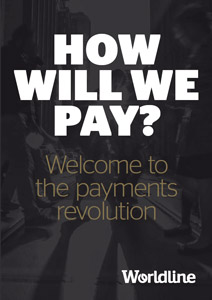The long and winding road to non-cash
13 / 02 / 2018
It is only a five-and-a-half-hour ferry journey from Rostock in northern Germany to the southern Swedish coast, or about five hours by car from Hamburg. In terms of payments culture, however, the two countries are worlds apart. Swedes use cash for fewer than 20% of all retail payments. In Germany, cash is used in about 74% of shopping transactions. While Germans hold on average €103 in cash in their wallets, Swedes now even use the popular payment app Swish to give money to buskers, beggars and churches.

It is only a five-and-a-half-hour ferry journey from Rostock in northern Germany to the southern Swedish coast, or about five hours by car from Hamburg.
In terms of payments culture, however, the two countries are worlds apart. Swedes use cash for fewer than 20% of all retail payments. In Germany, cash is used in about 74% of shopping transactions. While Germans hold on average €103 in cash in their wallets, Swedes now even use the popular payment app Swish to give money to buskers, beggars and churches. According to Riksbank statistics, just 13% of Swedes used cash for their latest transaction.
Even within the eurozone, there are stark differences in payment markets. An ECB survey found that in the Netherlands cash is only used for 45% of transactions. Dutch consumers use contactless technologies for almost 10% of all Point Of Sale transactions in 2016, whereas in Germany penetration is barely 1%.
So, what is going on? While many of the countries that are more loyal to cash are the poorer EU members in southern Europe, that is clearly not the case for Germany, Austria and Slovenia.
Macroeconomic reasons alone do not explain the divergence. And while it would be easy to generalise about cultural and even religious differences, that would hardly explain the very different attitudes to payments found in northern European countries as similar as Germany, Sweden and the Netherlands.
Local decisions
What seems to be crystal clear is that decisions by governments, central banks and other players in the payments system have a fundamental part to play in determining the differing speeds at which countries are going cashless. It is ultimately local decisions which are driving (or holding back) the evolution of the different payment markets, not only in Europe but worldwide.
For instance, the strong position of online payments in the Netherlands is partly due to the success of the iDEAL payment method. The Dutch central bank managed to get different parties around the table to develop a single approach to support digital commerce. With the same proactive and cooperative attitude, the Dutch are now preparing for the arrival of Instant Payments.
In France, back in the 1960s, the government oversaw the birth of the famous Carte Bleue, partly in order to boost the country’s IT capabilities. The French then went on to create the world’s first smart card and the Titre Interbancaire de Paiement (TIP) remote payment order, putting France among today’s leaders in digital payments.
This legacy in financial innovation and cooperation means that these countries are now well positioned to evolve towards Instant Payments and the other opportunities of PSD2, the revised European directive on payment services.
As we are seeing in Sweden currently, the evolution to non-cash gains unstoppable momentum when all players come together, including the government, the central bank, the banks, retailers and of course the consumers. The Riksbank is now forecasting that cash transactions will make up barely 0.5% of the value of all payments made in 2020.
In short, the non-cash society will not become a reality by itself. Only when all players in the payments market get together to support non-cash alternatives will consumers and businesses be able to benefit fully from the world of digital payments.
Cashless or less cash?
Cash can imply high costs for national economies (up to 1.5% of GDP, according to Mastercard). South Korea wants to phase out coins by 2020, mainly to reduce minting costs. Cash also implies increased security risks, exposure to fraud, and management costs. Switching to electronic payments can improve the speed of transactions, lower costs and increase traceability, which is of great interest to governments and tax authorities.
Conversely, the relative anonymity of cash is of high value in itself. Consumers may be reluctant to rely too much on digital infrastructure or to trust too much in government. It is a debate that every country needs to have for itself.
The most probable scenario is that we will move to a “less cash” society, rather than a completely cashless one. And while there may always be a place for cash, the switch to cashless seems to be accelerating, albeit at different rates in different parts of world.

